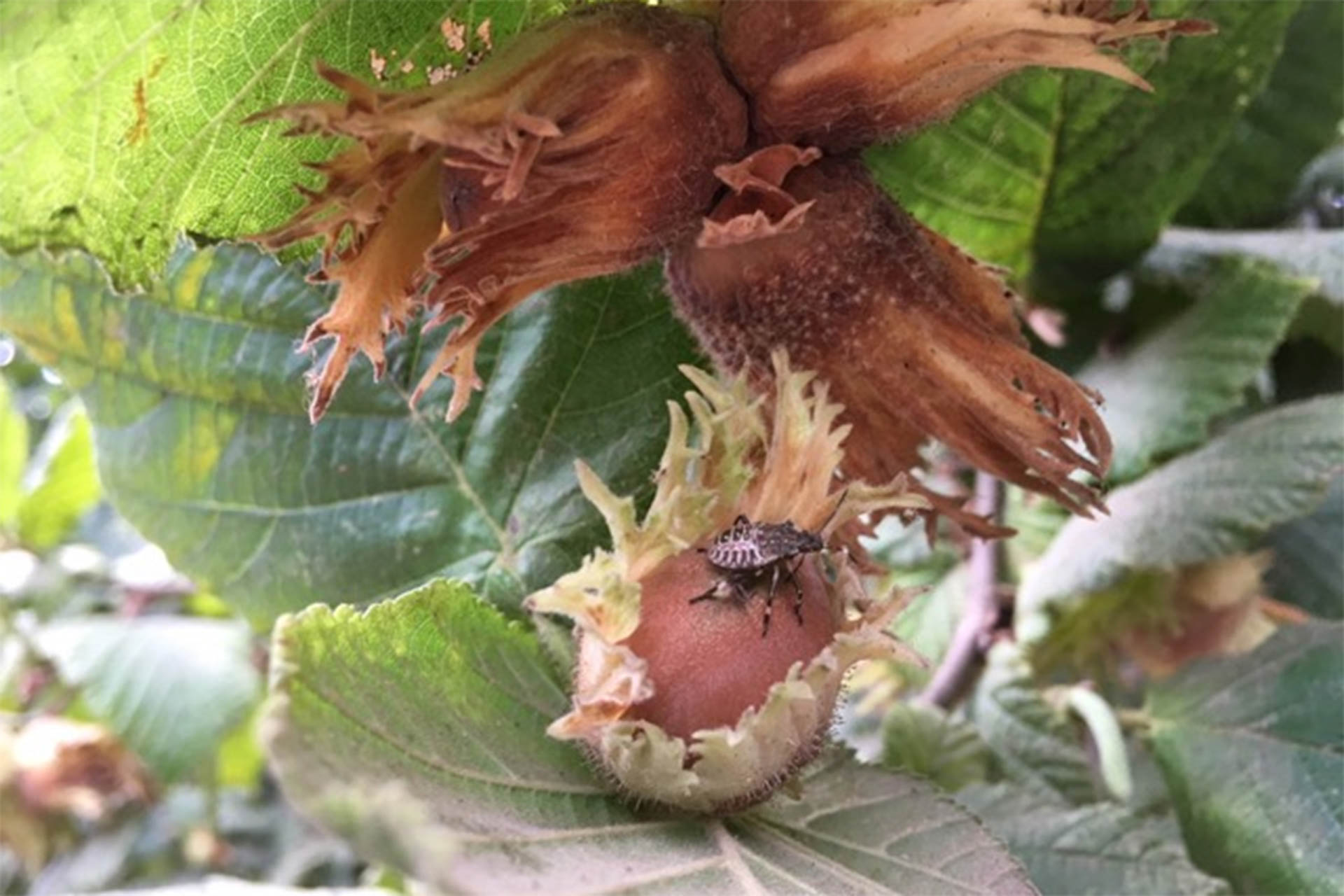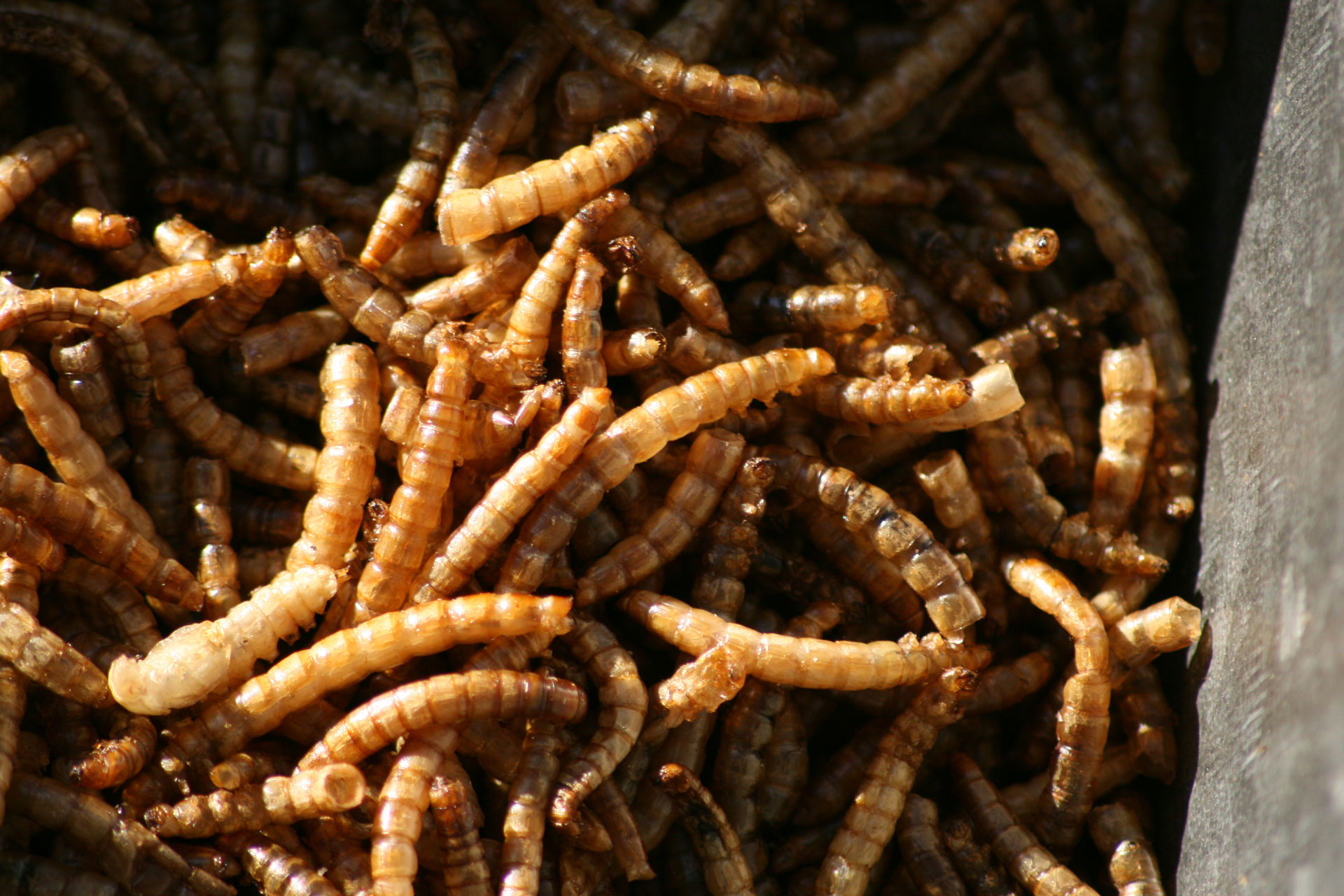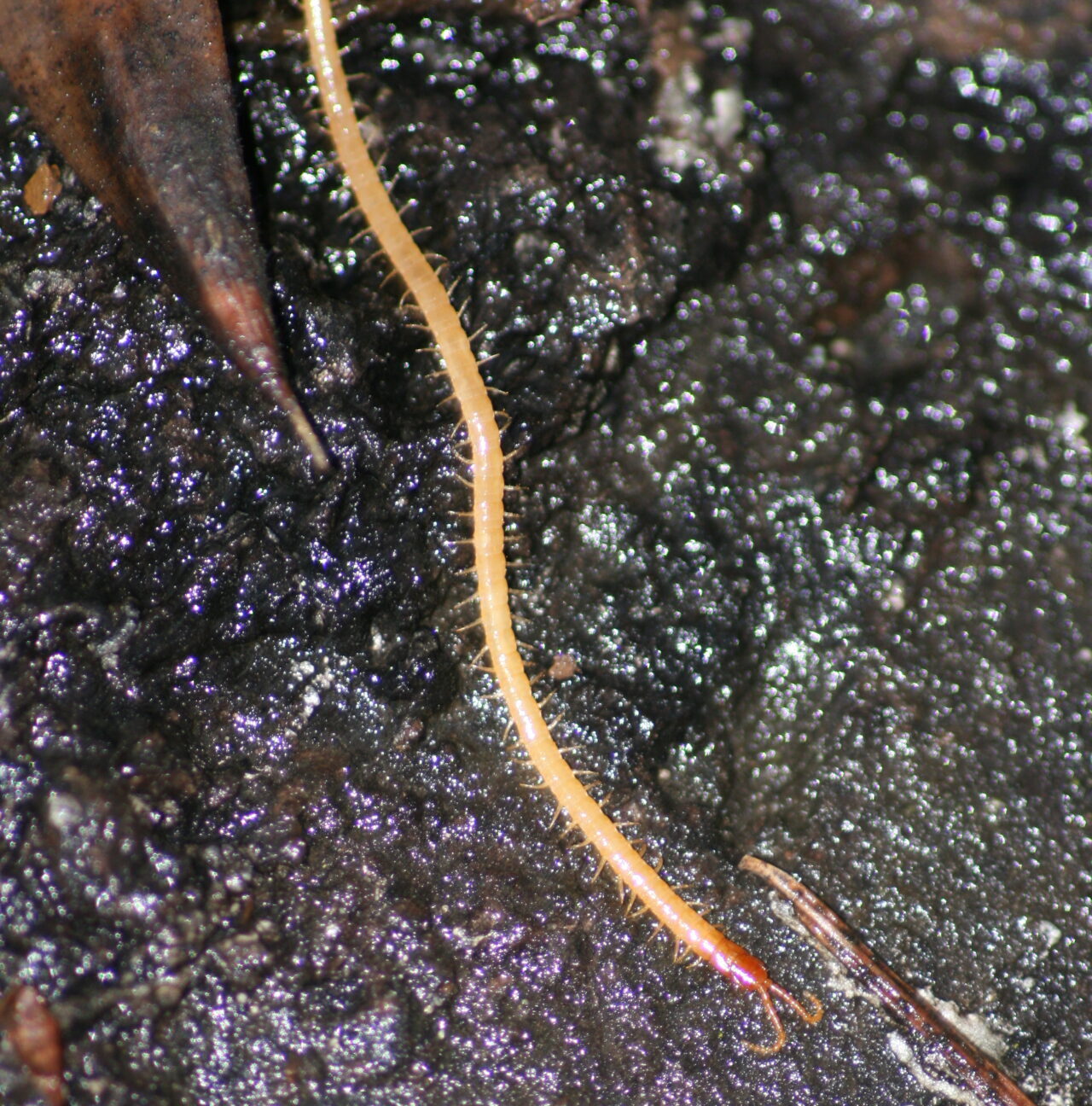Research in the Pacific Northwest is focused on finding biological and softer alternatives to control brown marmorated stink bug (BMSB.) The BMSB is an invasive species from Asia that first appeared in the U.S. in 2010 and has since spread and become a significant problem in Oregon.
The samurai wasp, Trissolcus japonicas, is a natural predator of BMSP that followed its host from Asia to the United States. In Asia, the wasp takes care of 60 to 90 percent of BMSB eggs.
“We found the wasp in downtown Portland; we started moving it around,” said Oregon State University (OSU) Extension Orchard Specialist Nik Wiman.
Populations of the samurai wasp have shown up in other states, including Washington, New York, New Jersey, Delaware, Maryland, West Virginia and Washington DC. The populations are not genetically related to the others, so each is showing up on its own, not simply breeding and migrating.
Parasitized Eggs
Since the wasps are so tiny – approximately the size of the period at the end of this paragraph – the easiest way to check for their presence is by monitoring BMSB egg masses on the underside of leaves. Egg masses are green to blue-green, barrel-shaped clusters. Because of their color, they are hard to see. When the eggs are parasitized by the samurai wasp, they turn black and should be left alone. Blackened eggs are also easier for the human eye to spot. The wasp larvae feed on the BMSB larvae, killing the stink bugs before they hatch.
Wiman and other scientists have collected and analyzed wild, fresh and frozen BMSB egg masses. The researchers are seeing an increase in parasitism from the samurai wasp. In 2018, they saw a 22.4 percent rate of parasitism. In 2019, that number increased to 26.8 percent.
Raising and Releasing Wasps
The researchers are raising the samurai wasps in an OSU lab to target-release in specialty-crop areas.
“When we go out to release, we look for natural areas that don’t have insecticides,” Wiman said.
He said the 1- to 2-millimeter stingerless wasps has spread about six miles per year and researchers are hopeful that with continued lab work and research they can strike a healthy samurai wasp/BMSB balance.
BMSB Detection and Spread
The brown marmorated stink bug – marmorated means marbled or streaked – was first detected in the US in 1998 in Pennsylvania. It has since become a serious pest in apple, pear, stone fruit and hazelnut orchards in the Pacific Northwest. It feeds on about 100 different varieties of plants, including many agricultural crops, such as grapes, peppers, tomatoes, corn, squash and soybeans. BMSB also causes issues with some shade trees, such as maples.
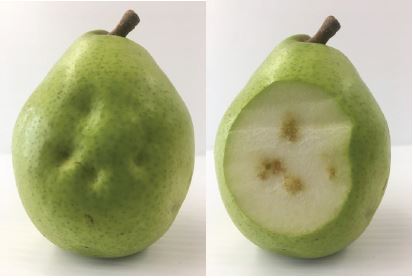
The BMSB has been a problem in hazelnuts since 2004, according to Wiman. Researchers, growers and processors have seen 5-15% BMSB damage in hazelnuts over the past four-year period.
OSU Statewide Organic Vegetable Extension Agent Nick Andrews said he’s seen BMSB damage, “intermittently in vegetables.”
The BMSB probably arrived in the US aboard international shipping crates. After its arrival, the stink bug quickly began expanding its territory, spreading across the states. In 2010, the pest caused 37 million dollars in lost apple crops in the Mid-Atlantic States. Also that year, more than 90 percent of some stone-fruit growers’ crops were lost. By the end of 2010 and into 2011, the BMSB had become a serious pest in orchards along the Eastern states. This stink bug variety has now spread and established itself in many parts of North America – 42 states from California to Maine. In Oregon, the BMSB is a severe problem. It’s also causing agricultural issues and is considered a nuisance in California and Washington State.
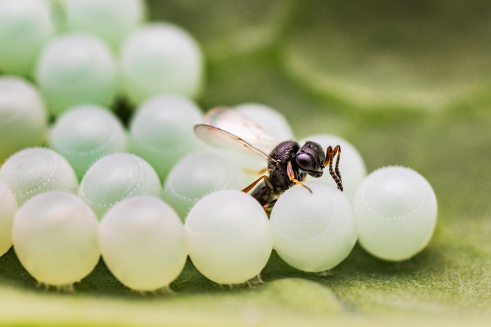
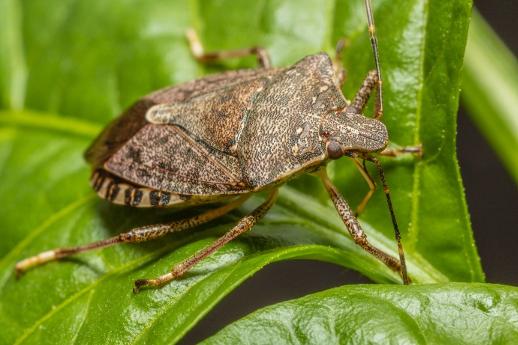
Feeding Damage From Nymphs and Adults
“The nymphs are a huge part of the problem,” Wiman said.
A true bug, both the BMSB nymphs and adults use their tubular mouthpiece to pierce developing fruits, vegetables, nuts and seeds. They inject saliva inside, making a sort of slurry, which they then suck up through their straw-like mouths. The insect damage creates unsightly brown spots inside the kernels of hazelnuts. Damaged fruit shows a dimpled appearance on the skin. Inside are brown areas of rot.
BMSB are speckled grey and brown, with white bands on their antennae and a triangle shape on their back called a scutellum. They are a fairly large bug, broad-bodied and up to 1-inch in length. BMSB cannot sting or bite, but they stink if disturbed or squashed. Stink bugs spray a noxious odor from their abdomen as a defense mechanism. They live for 6-8 months. Females can lay up to 400 eggs during their lifetime.
Other OSU Research Discoveries
- BMSB show a disconnect between feeding and responding to pheromone traps.
- Early season response to traps is poor.
- Warning: Bringing pheromones into the orchard can cause damage in the trap vicinity. Aggregation pheromone attracts all the insects. Keep them out along the border.
- Traps are useful for detection, but they don’t take the place of scouting.
- Exploiting pheromones to attract-and-kill, or for mass-kill sites needs more research.
Control is Elusive for BMSB
Insecticides which are effective for BMSB are nearly all broad spectrum and restricted use, Wiman said.
Tests have been done with baited sheets of netting treated with pyrethroid. There have also been experiments done using light as a way to attract BMSB to such a kill site. The problem? Getting the BMSB to land on the netting and stay there long enough for the pesticide to do its job.
“Get BMSB to land for about one minute on the netting and it will die,” Wiman said.
Growers can use pyrethroids and pyrethrin, but he says they aren’t all that effective on BMSB. Also, by using insecticides, growers risk killing the beneficial samurai wasp.
“We found the samurai wasp is really sensitive to pesticides. Entrust™ was one of the most toxic,” Wiman said. “It affects the diamids, which is the softest materials of the wasp.”
For smaller organic farms, exclusion is likely the best way to keep stink bugs at bay with the use of particle films, tunnel row covers and other barriers. Kaolin clay, or Surround, also helps discourage insects. The spray-on clay coating won’t kill the insects, but it irritates them, and they don’t like it, Wiman said.
Unfortunately, BMSB is nearly impossible to control.
“You don’t have control,” Wiman said. “It’s coming from the environment. You can be the best manager, but you still can’t control the BMSB.”
Plant Wasp Habitat
“Urban areas put out a lot of stink bugs,” he said, as do riparian zones and forests. So, farms near those areas are bound to experience issues with stink bugs. If allowed to flourish, the wasps will likely show up in these areas as well.
Researchers are looking at what plants attract the wasps. Samurai wasps that were fed honey water in the lab tended to grow faster and show signs of better health.
“They probably enjoy floral resources,” Wiman said.
That steers the organic grower toward planting flowers, either within the orchards or along the borders. He said the flowering plants don’t necessarily have to be native to attract the wasps.
One Grower’s Experience with BMSB
Joe Beaudoin, of Joe’s Place Farms in Vancouver, Washington said BMSB arrived on his property 4 to 5 years ago. Beaudoin said he was the first farmer in Southwest Washington affected by the stink bugs.
“Oregon State University and Washington State University were out at our place for four years,” Beaudoin said.
The first thing the BMSB hit was his peppers. Then they moved on to other fruits and vegetables.
“They sting with their proboscis,” Beaudoin said. “One sting in a pumpkin or squash pretty much destroys them. There’s no repairing the damage.”
The stink bugs also hit his cherries, berry crops and peaches. He noticed the BMSB were variety specific in what they attacked. He has PF 23 (Flamin’ Fury) peaches and Suncrest peaches growing next to each other. Both are yellow, freestone varieties.
“The PF 23 was 100-percent ruined,” he said, but the Suncrests – a hardy variety bred in Fresno, California – were virtually untouched. Beaudoin grows 15 different varieties of peaches all together. “The PF 23 – they liked it the best.”
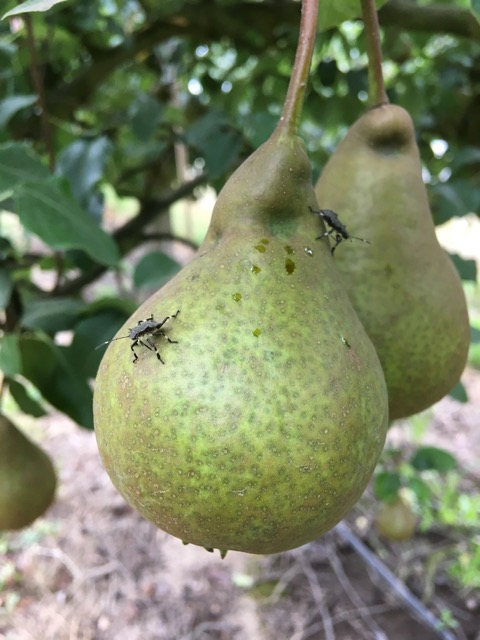
He noticed that the BMSB had preferences in his pear crops, too, preferring the russet (brownish) pears rather than green pears.
“It’s kind of strange,” Beaudoin said.
Then, for the most part, the stink bugs moved on.
“They moved into apple country,” Beaudoin said. “They went east into the valley. They’re moving out and spreading out.”
The amount of damage to produce crops at Joe’s Place Farms has recently diminished.
“We have not had that much damage,” he said of last growing season.
As for the reason the stink bugs hit his farm first? Beaudoin figures it’s because he is located close to an airport.
The Pacific Northwest has not been as hard hit by BMSB as the East and the Midwest, according to Beaudoin. He heard the story of one farmer in the Midwest who drove his tractor for the day through his fields. At the end of the day, “He got a five-gallon bucket full of brown marmorated stink bugs out of his air filters.”

